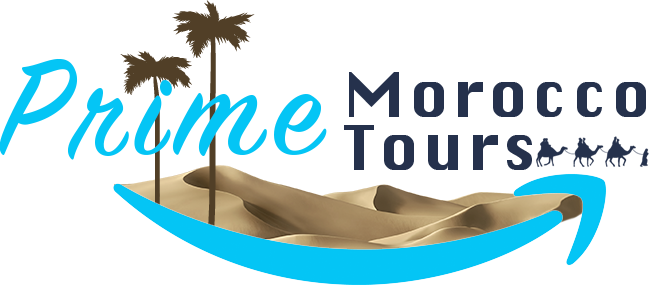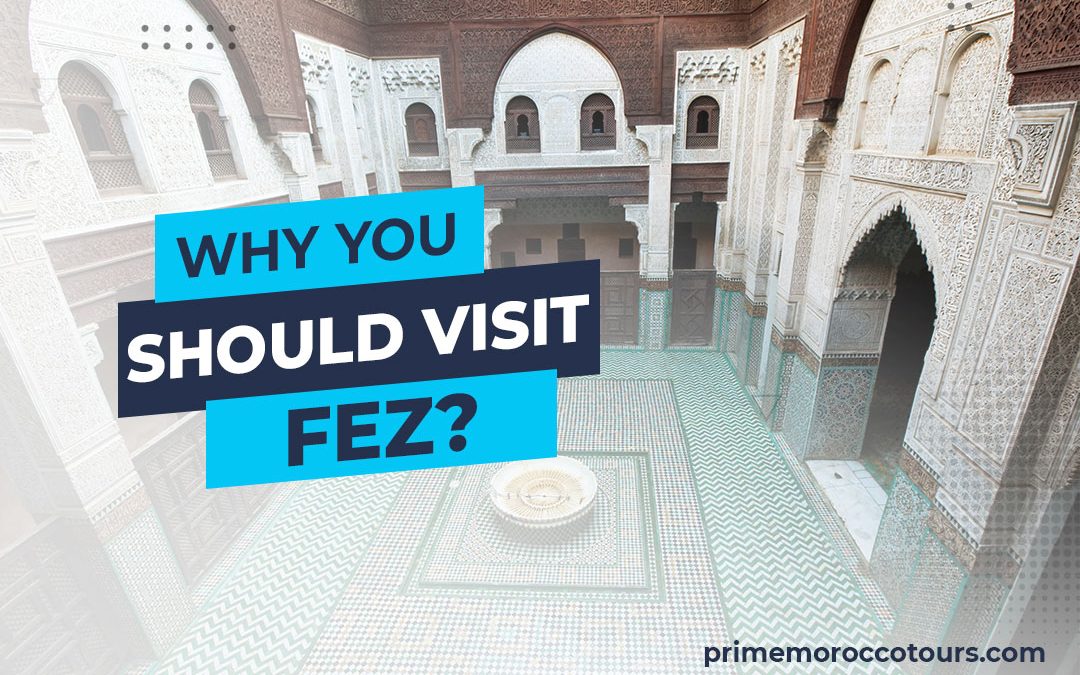The main reasons why you should visit Fez
When people dream of Morocco, images of vibrant souks, intricate tilework, and ancient medinas often come to mind. Nowhere are these visions more alive than in Fez, the country’s cultural and spiritual heart. Unlike the modern glitz of Casablanca or the tourist-favorite Marrakech, Fez offers a raw, authentic Moroccan experience untouched by time. This UNESCO World Heritage city is not just a destination; it’s a journey back through centuries of tradition, craftsmanship, and intellectual legacy.
Fez invites you to get lost in the world’s largest car-free urban area, where donkey carts still navigate narrow alleys, and the scent of leather from ancient tanneries fills the air. Whether you’re a history buff, an architecture lover, a foodie, or simply a curious traveler, Fez will enchant you with its hidden gems and unmatched heritage. Keep reading to uncover the top reasons why this timeless city deserves a spot on your Moroccan travel itinerary.
Know the history of Fez by visiting
Fez isn’t just one of Morocco’s most enchanting cities — it’s also one of the oldest and most historically significant. Founded in the late 8th century by Idris I, a descendant of the Prophet Muhammad and the founder of the Idrisid dynasty, Fez quickly rose to prominence as the first Islamic capital of Morocco. This sacred lineage helped establish Fez as a center of religion, governance, and culture from its earliest days.
In the 9th century, the city experienced a transformative wave of migration when families exiled from Andalusia found refuge in Fez. They brought with them a vibrant cultural heritage — from distinctive musical styles and elegant clothing traditions to refined craftsmanship and architecture. One of the most enduring legacies of this era is the founding of the University of Al Quaraouiyine by Fatima al-Fihri in 859 CE — widely recognized as the oldest continuously operating degree-granting university in the world. Fatima’s contribution marks a milestone in the history of global education and highlights the pivotal role women played in Islamic intellectual life.
Over time, Fez witnessed several changes in power. It was seized by both the Caliphate of Córdoba and the Fatimid Caliphate, each of which left its mark on the city’s evolving identity. By the 11th century, Fez had deteriorated, but its fortunes were revived during the Almoravid dynasty, which reinvigorated trade and scholarship, though the capital had shifted to Marrakech.
The Almohads, who succeeded the Almoravids, further fortified the city during the 12th century, building the defensive walls that still surround Fez el-Bali (Old Fez) today. This era also saw the expansion of Fez into one of the largest and most thriving cities in the world.
Fez reached its Golden Age under the Marinid dynasty in the 13th and 14th centuries. Not only did it regain its status as Morocco’s capital, but it also became a flourishing hub of religious scholarship, architecture, and the arts. It was during this time that the Jewish quarter, known as Fez el-Jdid, was established — a district that continues to attract visitors with its rich Sephardic heritage and vibrant culture.
In the 20th century, under French colonial rule, Fez expanded with the creation of La Nouvelle Ville (New Town). This modern area contrasts sharply with the historic medina, showcasing wide boulevards, French architecture, and European-style cafés — a testament to the colonial influence that helped shape the city’s modern identity.
From its spiritual foundations and Andalusian influence to its scholarly legacy and colonial evolution, Fez is a city layered with stories. Each era has left a lasting imprint, making Fez not just a place to visit, but a living museum of Moroccan history and identity.
The Geography and climate of Fez
Fez is located near the Atlas Mountains, however, not close enough, which makes the climate of Fez less cold than the region near the city. The summers tend to be hot in Fez. The weather in Fez is generally ideal for people who love to be exposed to the sun.
The culture of Fez, Visit Fez
Fez, just like the entirety of Morocco has a diverse culture. Wandering through alleys and streets of Fez is like travelling from one culture to another. However, the most recurring motifs are the Arab-Islamic and Berber. The architecture, the traditions, the clothes, the music and the cuisine are heavily influenced by Andalusia. The Golden Age of Islam played a huge role in shaping Fez to as it is known for; a capital of knowledge and wisdom.
Discover the Magic of Fes Today!
Step into a world where history lives in every alleyway, scent, and sound. From the ancient Medina to the breathtaking tanneries and timeless traditions, Fes offers a journey through Morocco’s rich cultural soul. Whether you’re wandering the labyrinthine streets, admiring centuries-old architecture, or sipping mint tea in a tranquil riad, Fes will awaken your senses and leave you with unforgettable memories.
Fes Best Of – The Sightseeing of Fez
Fez is a captivating city brimming with history, culture, and soul. Known as Morocco’s spiritual and intellectual heart, this UNESCO World Heritage city offers travelers a unique glimpse into the past. Walking through its narrow, labyrinthine alleys is like stepping back in time. Here’s a detailed guide to the must-see attractions and experiences in Fez — the very best of what this imperial city has to offer.
The Medina of Fez
Visit Fez and discover the oldest Medina in Morocco! As we already have mentioned, it was built during the 7th century, from that time onward the history has embedded its traces in the city. Visiting the Medina is a must-do, especially, if you’re a history nerd.
The Medina is like a labyrinth; getting lost in the alleys is a very fun activity, especially when you’re competing with your friends; who has the best memory?
The traditional Riads are among the best places that you can visit in Fez; these Riads have a unique architecture, in which a fountain courtyard is the centre of the building and all the other rooms face it inwards. The design of the Riads from outside always seems to fool people into believing that it’s an insignificant building.
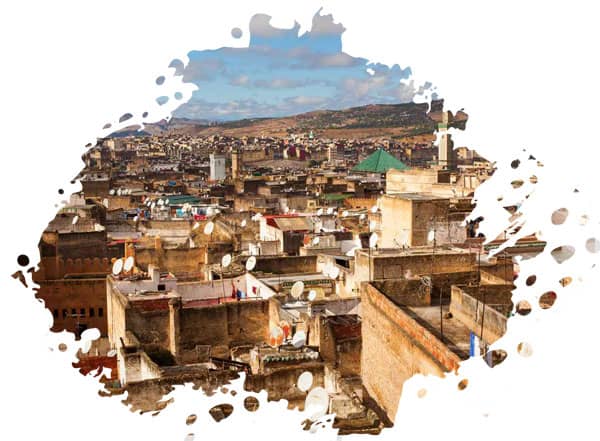
2. Al-Qarawiyyin University and Mosque
Founded in 859 AD, Al-Qarawiyyin is recognized by UNESCO and the Guinness World Records as the oldest existing and continually operating educational institution in the world. The mosque is still in use, and while non-Muslims can’t enter the prayer hall, they can admire its architecture from designated viewing spots. The green-tiled roofs and delicate Arabic calligraphy are a sight to behold.
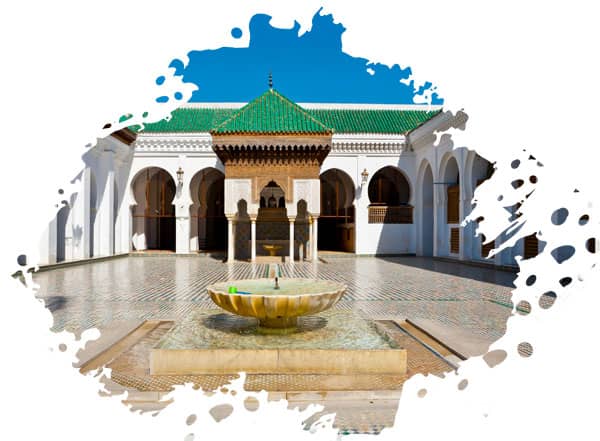
3. Chouara Tannery
One of the most photographed spots in Fez, the Chouara Tannery offers a window into ancient leather-making techniques still in use today. From nearby terraces, visitors can watch workers dye leather in large stone vats using natural ingredients like poppy, saffron, and indigo. The smell can be intense, but fresh mint is often provided to mask it.

4. Bou Inania Madrasa
Built in the 14th century, this theological college is one of the few religious buildings in Morocco open to non-Muslims. The madrasa showcases exquisite Marinid architecture: cedar wood carvings, zellige tilework, and a tranquil central courtyard. Its location near the bustling Tala’a Kebira street makes it an accessible and peaceful stop amid the urban energy.
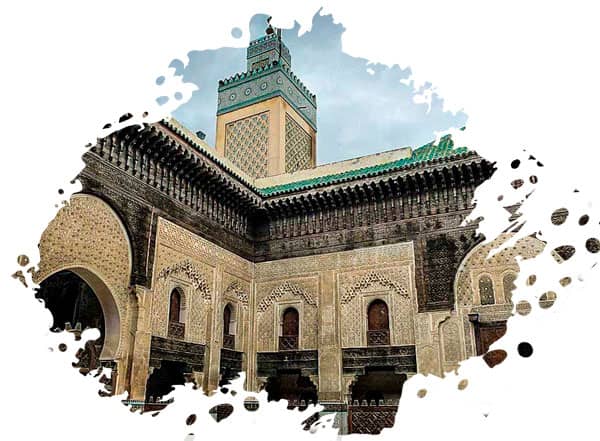
5. Nejjarine Museum of Wooden Arts & Crafts
Located in a beautifully restored funduq (caravanserai), this museum celebrates traditional Moroccan woodworking. The structure itself is a masterpiece, with carved balconies and an interior courtyard. Exhibits include tools, antique furniture, musical instruments, and crafts that highlight the region’s artistic heritage.
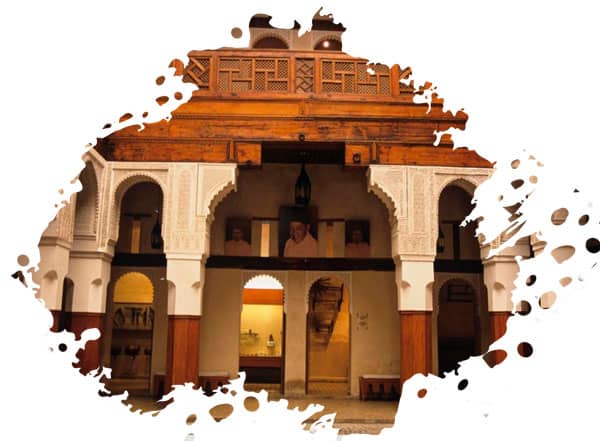
6. Royal Palace of Fez (Dar el-Makhzen)
While visitors can’t enter the palace, the massive golden gates of Dar el-Makhzen are a must-see. The gates are elaborately decorated with intricate brasswork and zellige tile patterns. The palace itself remains a residence of the Moroccan royal family and is protected by high walls, but its grandeur is evident even from the outside.
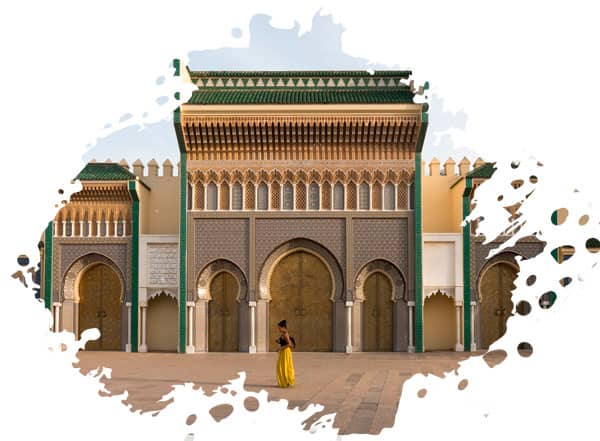
7. Mellah (Jewish Quarter) and Ibn Danan Synagogue
The Jewish quarter of Fez offers a contrasting architectural style, with balconies overlooking the streets—something rare in traditional Moroccan homes. The restored Ibn Danan Synagogue provides insight into the once-flourishing Jewish community in the city. Nearby is the Jewish cemetery, known for its white tombs and historic significance.
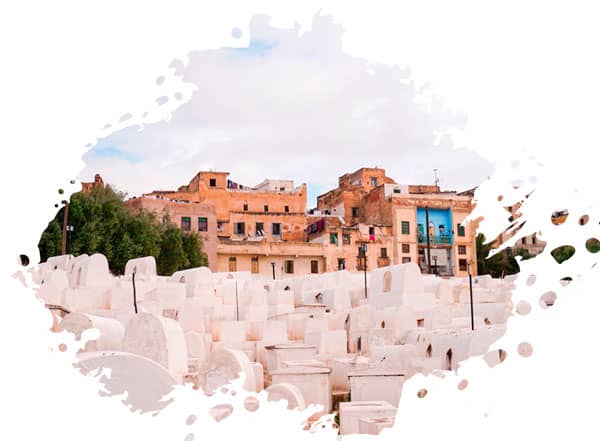
8. Jnan Sbil Gardens
A peaceful green escape near the Medina, the Jnan Sbil Gardens feature shaded walkways, fountains, and an artificial lake. Once part of the Royal Palace, the gardens have been carefully restored and are perfect for a mid-day break from sightseeing.
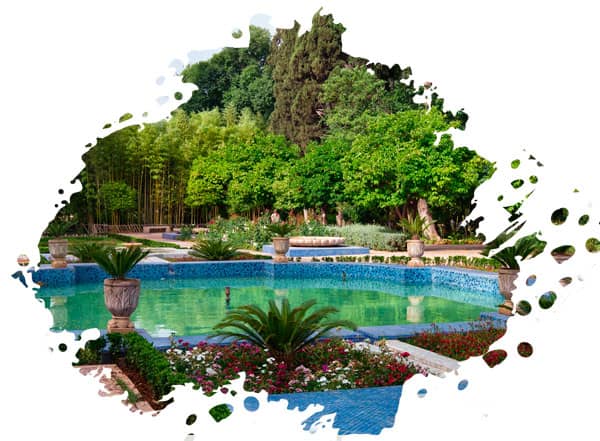
9. Borj Nord & the Arms Museum
Located on a hill overlooking Fez, Borj Nord is a 16th-century fortress offering panoramic views of the city. Inside, the Arms Museum displays a fascinating collection of historical weaponry from different eras and cultures. The vantage point is especially beautiful during sunset.
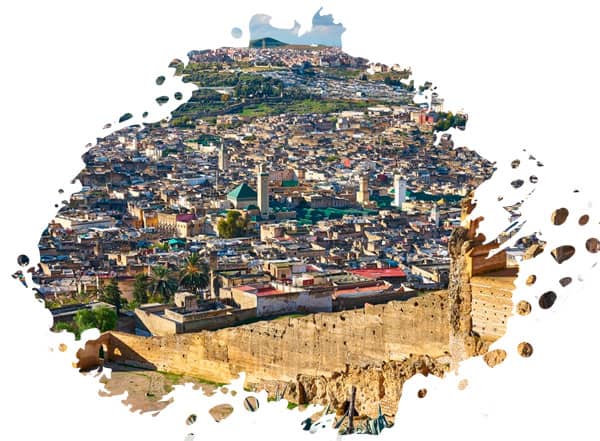
10. Dar Batha Museum
Originally a royal palace, the Dar Batha Museum now houses a collection of traditional Moroccan arts, including ceramics, textiles, jewelry, and woodwork. The building itself, with its Andalusian-style courtyard and fountain, is part of the charm.
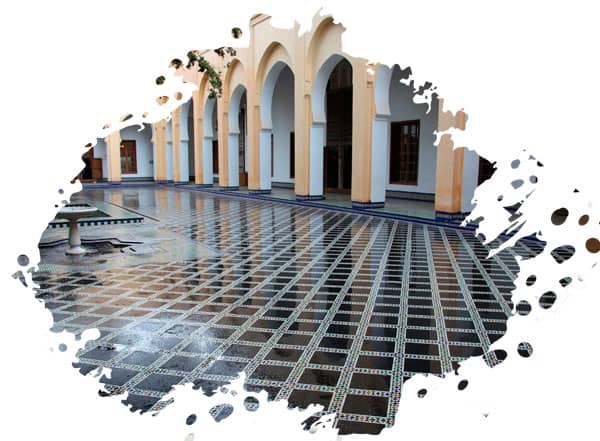
Discover the Magic of Fes Today!
Step into a world where history lives in every alleyway, scent, and sound. From the ancient Medina to the breathtaking tanneries and timeless traditions, Fes offers a journey through Morocco’s rich cultural soul. Whether you’re wandering the labyrinthine streets, admiring centuries-old architecture, or sipping mint tea in a tranquil riad, Fes will awaken your senses and leave you with unforgettable memories.
Fez excursions, visit Fez the old city
There many interesting spots near Fez that you can visit in a day trip, such as the ones we organize in “Prime Morocco tours”.
Most notability: Volubilis and Meknes. The first is an ancient Roman city, which is situated near Moulay Driss (another historical site). The second is an imperial city that is similar to Fez, but not quite that much; the city has some wonderful, grand-scale historical sights.
From fez, you can also visit the cedar forests near Ifrane and Azerou; there you can enjoy a picnic with the monkeys who live in the mountains.
Some other day trips from Fez visit Chefchaouen: the Blue City. This city is heavily influenced by Spain.
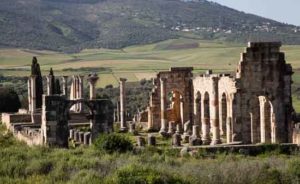
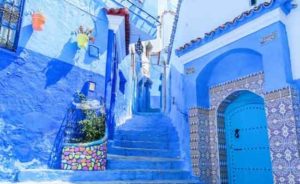
Fez desert tours
You can go on multiple day tours from Fez to Merzouga Desert; it’s something that the tourists seem to enjoy a lot. These tours can be customized to include as many places as you want; Merzouga Desert seems to be one of the most captivating places that everyone wants to visit. There in the desert, you’ll get the chance to do camel trekking, spend a night in a desert camp, and eat traditional Beber food and so on. You can also go from there and visit Ourzazate and Ait ben Haddo to explore the spots where Game of Throne and movies like Gladiator filmed their scenes.
Visit Fes the imperial city.

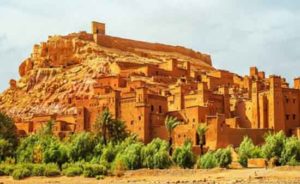
Fez is a city that should be on the list of every passionate traveler, who is interested in learning about history, discover new cultures and enjoy time a wide variety of natural landscapes.
Want more information about Fez or you want to visit Fez? Please contact us.
Please leave us a comment below, telling us about Fez and your experience with the place, if you have any.
